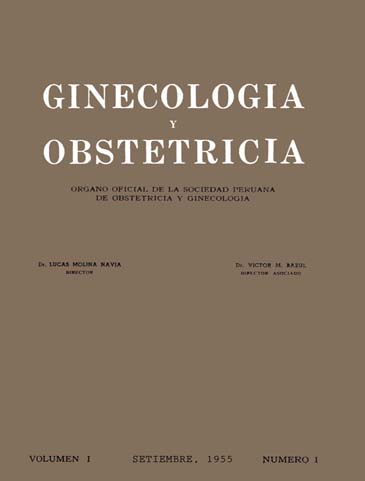Approach 95.4% in the diagnosis of cervical cancer by the Pap method in 482 patients selected
DOI:
https://doi.org/10.31403/rpgo.v1i894Abstract
We studied 482 patients from the outpatient clinic of Gynecology of the Archbishop Loayza Hospital in Lima, selected by age and certain gynecological conditions. Taking secretions were the posterior fornix of the vagina. Pap staining. 11.4% of patients have a residence of less than six months in Lima. Average age: 45 three years and between 30 and 60 years. There is sufficient information to link race and pregnancy status with cancer incidence. In diseased with cancer presented functional disorders, usually associated. In the 482 patients selected there are 50 cases of cancer confirmed by biopsy. Diagnosed clinically. Unsuspected and diagnosed as cervicitis, 36. No clinically suspected and diagnosed casually. The result of the examination of the sheets was as follows: Correct: 460 cases. Positive 40. Negative, 420. Wrong: "False positives", 12 "False negatives" 10. Approach: 95.4%. Error: 4.6%. Casually and without accusing the least clinical symptoms were diagnosed by Method Pap one case of pre-invasive neck carcinoma, 2% of all cancers. There are no cases of Cervical Adenocarcinoma. There is a case of endometrial adenocarcinoma and an error of 50% in the diagnosis of this type of uterine cancer. Carcinoma in Pre-invasive cervical malignant cells differentiated according to the authors correspond to less malignant forms of cancer were found. In this regard, very we judge that reserve should be considered the value of the Papanicolaou method in determining the degree of malignancy of a tumor by a lack of correlation between clinical malignancy and appreciated histologically or cytologically malignant. From the morphological point of view malignant undifferentiated and differentiated cells are described. In cases of undifferentiated malignant cells they are described and presented hyperchromasia phenomena, chromatin condensation, variations in size, phagocytosis phenomena, etc. "Fiber Cells" form type "tadpole" and called "third kind" Graham classification: three types of differentiated cells are considered. "False positive" cases were due to misinterpretation of the cellular elements. The confusion came from endometrial cells showing signs of degeneration, aberrant cell from the external basal fanciful shapes, cervical cell types with diverse phenomena of degeneration, benign cells from the inner basal with delicate chromatin and large nucleus, cells from equally basal nuclear changes they have experienced due to infection or trichomoniasis, endocervical cells and certain types of histiocytes. There are 10 "false-negative" cases. Endometrial adenocarcinoma 1 Neck epidermoid cancer, 9 cases. The causes of error are due to improper technique in making samples, insufficient number of sheets prepared in each case, rainfall in the reading of the slides, lack of knowledge of the patient's condition and the personal factor.Downloads
Download data is not yet available.
Downloads
Published
2015-06-12
How to Cite
Gordillo Delboy, R. (2015). Approach 95.4% in the diagnosis of cervical cancer by the Pap method in 482 patients selected. The Peruvian Journal of Gynecology and Obstetrics, 1(1), 58–92. https://doi.org/10.31403/rpgo.v1i894
Issue
Section
Artículos Originales
















